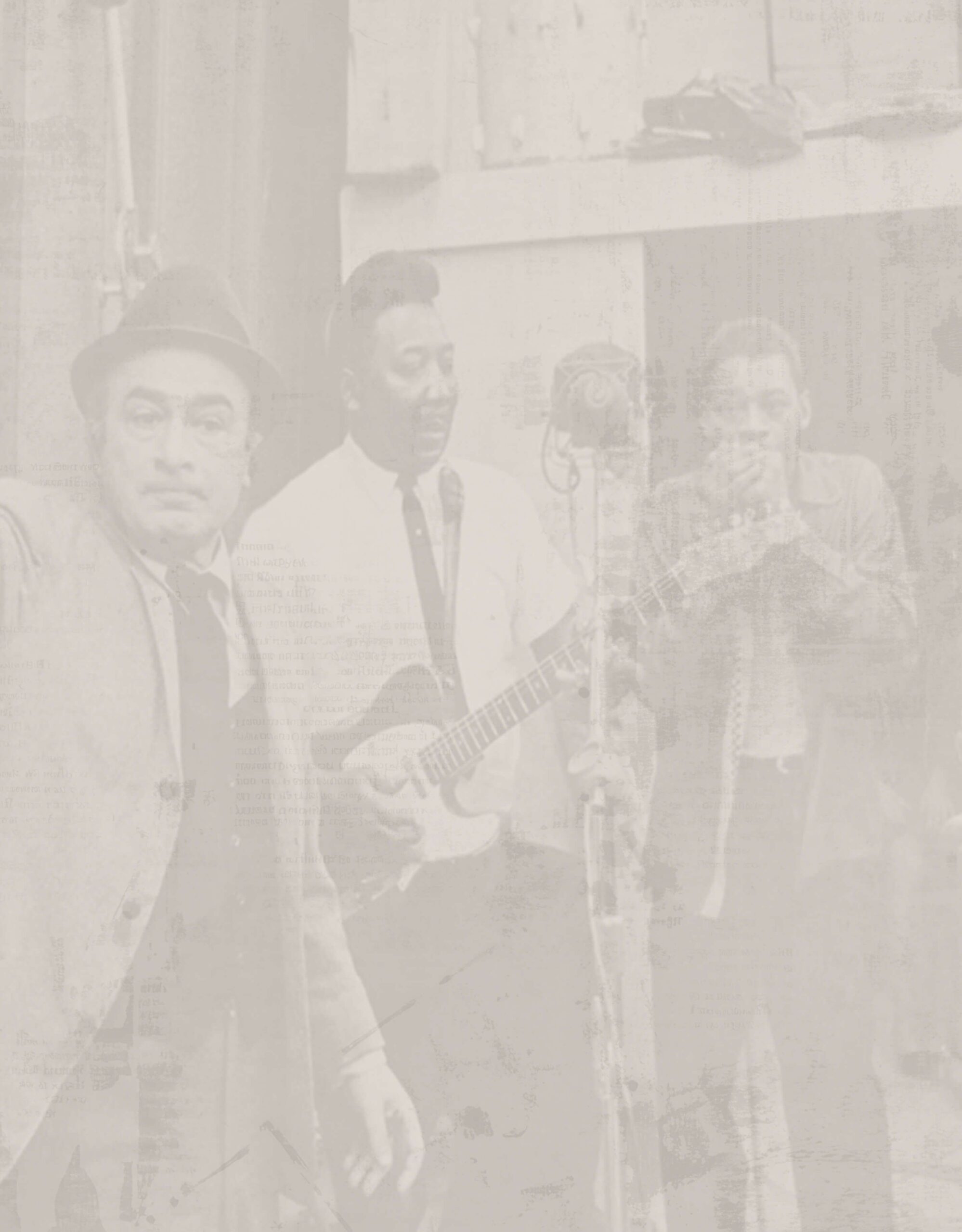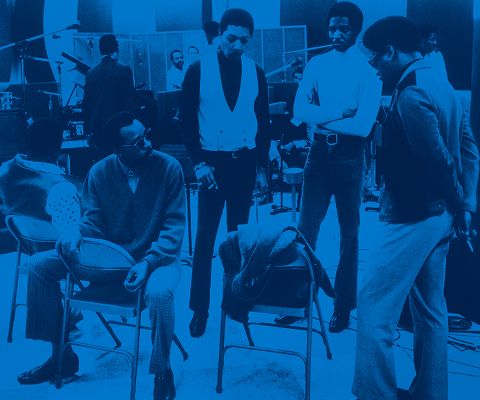The Dells
The Dells
“The Dells were the inspiration for my film “The Five Heartbeats”…Stuff that you see in that movie came directly from their lives.” - Robert Townsend
The Dells were one of the last vocal groups to sign to Chess’ roster, but they were also there the longest - and in turn, served as a crucial link between the doo-wop and R&B of one generation and the soulful balladry of another. They remained a beacon of overcoming adversity in the music industry, enjoying their greatest successes in the wake of personal turmoil and staying consistent, with little of the rotating line-ups that often affected groups like them.
The group originally came together as The El-Rays in the Chicago suburb of Harvey, consisting of schoolmates Verne Allison, Chuck Barksdale, Johnny Funches, Marvin Junior and Lucius and Mickey McGill. Under this name, they cut the single “Darling I Know” for the Checker imprint of Chess in 1954, backed by an orchestra arranged by staff songwriter Willie Dixon. The single failed to impact the charts, and the group would depart for Vee-Jay Records, where they scored a No. 4 hit on Billboard’s R&B charts with “Oh What a Nite,” penned by Junior and Funches.
Tragedy threatened to upend The Dells’ career in 1958, when the sextet suffered a serious car accident on the way to a gig. The physical toll was massive: lead vocalist Junior suffered injuries to his larynx that would alter his voice slightly, and McGill recovered in the hospital for six months. As a result, the group would disband, during which time Barksdale temporarily joined Chess doo-wop group The Moonglows. The Dells would reform in 1960, albeit with one line-up change: Funches elected to stay off the road and was replaced by John E. Carter, yet another vocal group local from former Checker signee The Flamingos.
Over time, The Dells rebuilt their career on the road, touring with the likes of Dinah Washington and Ray Charles. After the collapse of Vee-Jay Records, the group would return to Chess, signing to the Cadet imprint and adjusting their vocal harmonies to an evolving Black music landscape. In 1968, they’d find inspiration from their past, dusting off a moderate hit ballad from three years prior called “Stay in My Corner” and taking its new arrangement to the top of the R&B charts and No. 10 on the all-genre Billboard Hot 100. More hits followed throughout the decade, including “Always Together,” the medley “I Can Sing a Rainbow/Love is Blue” and, in 1969, a similarly dramatic, retitled update of their breakthrough “Oh What a Night” that matched the chart positions of “Stay in My Corner.”
Even as psychedelic soul, funk and disco reshaped the landscape of Black radio through the next two decades, The Dells’ quality (and its line-up) never wavered once. They remained with Cadet until the 1970s, enjoying moderate success on other labels. In 1991, Chicago-born writer/director Robert Townsend cited The Dells as one of his chief inspirations for The Five Heartbeats, a period film inspired by the great vocal groups of the ‘50s and ‘60s. The group not only served as technical advisors but contributed several songs to the soundtrack, including the unlikely R&B hit “A Heart is a House for Love.” Its placement in the Top 20 of the R&B charts gave The Dells an unprecedented feat: a Top 40 hit on that chart in every decade since the 1950s. The members - with acts like New Edition, Boyz II Men, After 7 and others inspired by their example as the 20th century drew to a close - were present to enjoy inductions into both the Vocal Group and Rock and Roll Hall of Fame in 2004. The latter’s Cleveland museum is where the sextet took their final curtain with a celebratory concert in 2012 - a fitting tribute for the scores of fans who stayed in their corner for decades.
The Dells were one of the last vocal groups to sign to Chess’ roster, but they were also there the longest - and in turn, served as a crucial link between the doo-wop and R&B of one generation and the soulful balladry of another. They remained a beacon of overcoming adversity in the music industry, enjoying their greatest successes in the wake of personal turmoil and staying consistent, with little of the rotating line-ups that often affected groups like them.
The group originally came together as The El-Rays in the Chicago suburb of Harvey, consisting of schoolmates Verne Allison, Chuck Barksdale, Johnny Funches, Marvin Junior and Lucius and Mickey McGill. Under this name, they cut the single “Darling I Know” for the Checker imprint of Chess in 1954, backed by an orchestra arranged by staff songwriter Willie Dixon. The single failed to impact the charts, and the group would depart for Vee-Jay Records, where they scored a No. 4 hit on Billboard’s R&B charts with “Oh What a Nite,” penned by Junior and Funches.
Tragedy threatened to upend The Dells’ career in 1958, when the sextet suffered a serious car accident on the way to a gig. The physical toll was massive: lead vocalist Junior suffered injuries to his larynx that would alter his voice slightly, and McGill recovered in the hospital for six months. As a result, the group would disband, during which time Barksdale temporarily joined Chess doo-wop group The Moonglows. The Dells would reform in 1960, albeit with one line-up change: Funches elected to stay off the road and was replaced by John E. Carter, yet another vocal group local from former Checker signee The Flamingos.
Over time, The Dells rebuilt their career on the road, touring with the likes of Dinah Washington and Ray Charles. After the collapse of Vee-Jay Records, the group would return to Chess, signing to the Cadet imprint and adjusting their vocal harmonies to an evolving Black music landscape. In 1968, they’d find inspiration from their past, dusting off a moderate hit ballad from three years prior called “Stay in My Corner” and taking its new arrangement to the top of the R&B charts and No. 10 on the all-genre Billboard Hot 100. More hits followed throughout the decade, including “Always Together,” the medley “I Can Sing a Rainbow/Love is Blue” and, in 1969, a similarly dramatic, retitled update of their breakthrough “Oh What a Night” that matched the chart positions of “Stay in My Corner.”
Even as psychedelic soul, funk and disco reshaped the landscape of Black radio through the next two decades, The Dells’ quality (and its line-up) never wavered once. They remained with Cadet until the 1970s, enjoying moderate success on other labels. In 1991, Chicago-born writer/director Robert Townsend cited The Dells as one of his chief inspirations for The Five Heartbeats, a period film inspired by the great vocal groups of the ‘50s and ‘60s. The group not only served as technical advisors but contributed several songs to the soundtrack, including the unlikely R&B hit “A Heart is a House for Love.” Its placement in the Top 20 of the R&B charts gave The Dells an unprecedented feat: a Top 40 hit on that chart in every decade since the 1950s. The members - with acts like New Edition, Boyz II Men, After 7 and others inspired by their example as the 20th century drew to a close - were present to enjoy inductions into both the Vocal Group and Rock and Roll Hall of Fame in 2004. The latter’s Cleveland museum is where the sextet took their final curtain with a celebratory concert in 2012 - a fitting tribute for the scores of fans who stayed in their corner for decades.


